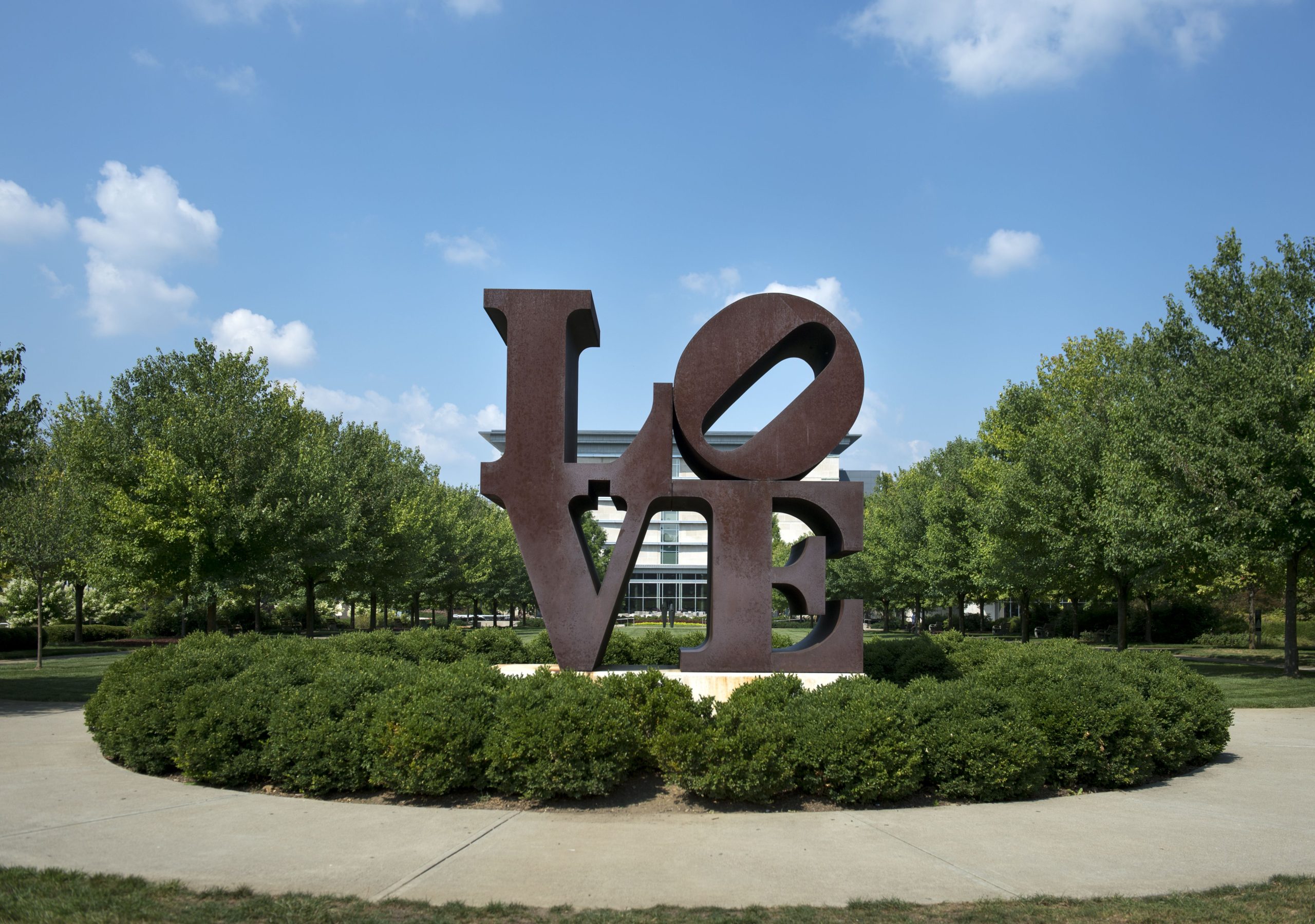
1964 : New York's Museum of Modern Art (MoMa) commissions Robert Indiana for a Christmas card, inspiring the creation of the iconic design LOVE . The design features the letters L, O, V and E in red with a blue interior, highlighting the slanted "O". This concept becomes a distinctive representation of pop art.
1970 : The popularity of the design LOVE leads to its transformation into a sculpture, while maintaining the color palette and original arrangement of the letters. This sculpture becomes a recognizable symbol in contemporary culture and art.
2008 : Following the success of LOVE , Indiana introduces HOPE, a similar design that emerges during Barack Obama's presidential campaign, symbolizing political optimism. This new design retains the aesthetics of the original but with a renewed message.
Materials and symbolism : Indiana chooses red-painted Corten steel for LOVE and red stainless steel for HOPE, seeking durability and symbolizing the strength and permanence of love and hope in urban environments.
2019 : In an unexpected twist, LOVE is removed from the streets of New York. However, its temporary exhibition at Rockefeller Center is announced until October 23, offering a unique opportunity for its appreciation. In parallel, HOPE continues to be exhibited at the intersection of 7th Avenue and 53rd Street, maintaining its presence in the urban landscape.
LOVE's Global Presence : With more than 50 versions around the world, it is found in cities such as New York, Philadelphia, London, Taipei and Singapore. This global expansion reflects the universality and cultural impact of the work.
LOVE in Spain : In Bilbao, it is located in the Plaza del Sagrado Corazón, becoming a point of cultural interest. In Valencia, an exhibition entitled AMOR in 2007 shows the adaptability of Indiana's message to the Spanish language, respecting its aesthetics and connecting with the Spanish-speaking public.